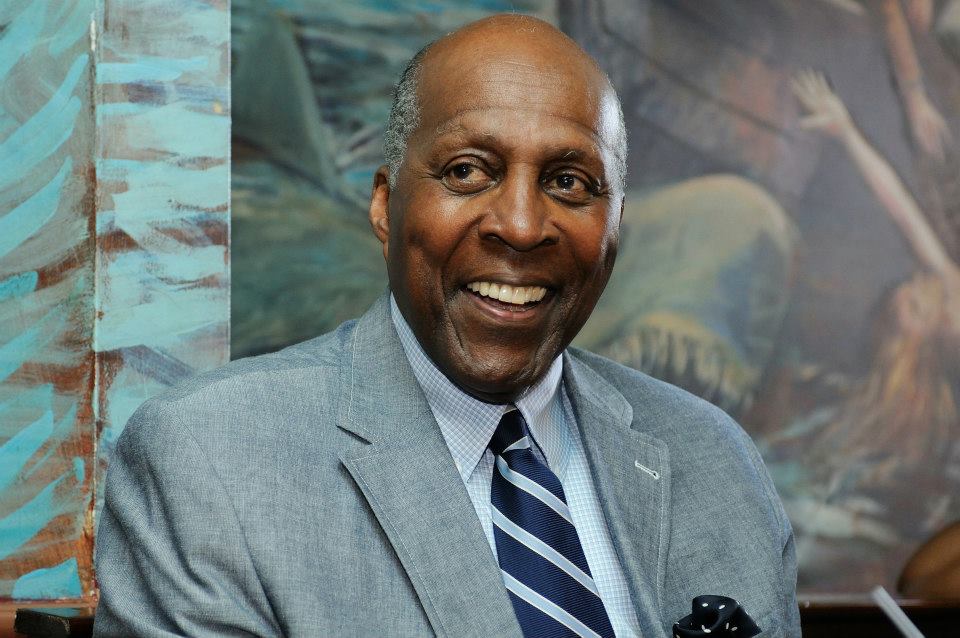Black Journalists Should ‘Stay on the Case’
Defeated Black Mayor Blames Disinformation:
Voters Vulnerable as ‘News Deserts’ Multiply
Covering Politics: ‘Listen More to Black People’
Ebony Reboots Online Monday Under New Owners
N.Y. Times Addresses Longtime Diversity Issues
Asian Americans Want More Coverage of Attacks
Board Folds Nonprofit After ‘I’m Not Woke’ Flap
White 4th Grader Picks Black Anchor as His Hero
Balta Casts Firing as Dispute Over ‘Objectivity’
Short Takes
Photos (c) by Jason Miccolo Johnson
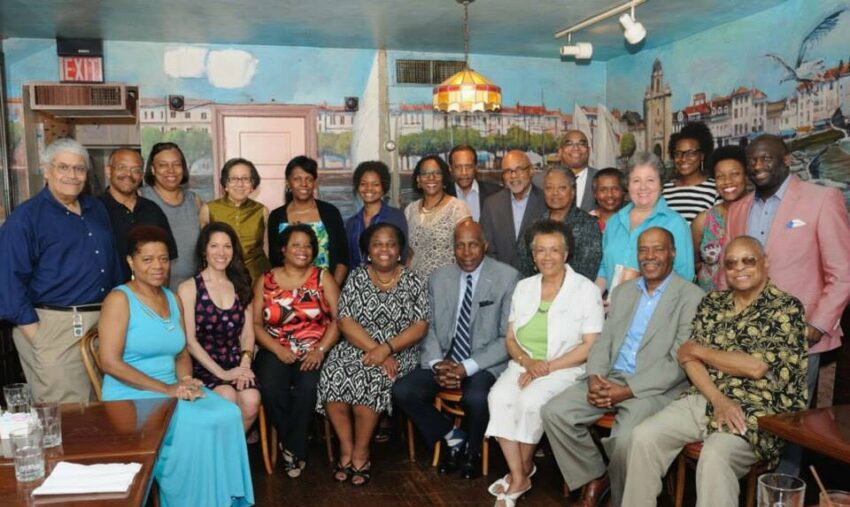
Black Journalists Should ‘Stay on the Case’
Vernon Jordan, the pre-eminent civil rights leader who urged Black journalists to “stay on the case” and report on the status of the Black community, died Monday evening, multiple sources close to the family told CNN, Jamie Gangel and Dan Merica reported Tuesday morning for the network. Jordan was 85.
“The former president of the National Urban League rose to prominence as a civil rights activist with close connections in all corners of American politics, working with presidents from Lyndon Johnson to Barack Obama,” they wrote.
Jordan made his comments about Black journalists at a May 31, 2015, Sunday breakfast with the Journal-isms Roundtable in Washington.
“Trouble is a-comin’ like it used to did,” the power broker said of the pre-Trump climate, repurposing a statement from a 90-year-old Black man in the early days of the civil rights movement.
It’s important for black journalists to “stay on the case,” Jordan said, referring to the plight of African Americans. “Most black people aren’t having this kind of breakfast, and don’t have the kind of jobs that we are blessed to have.”
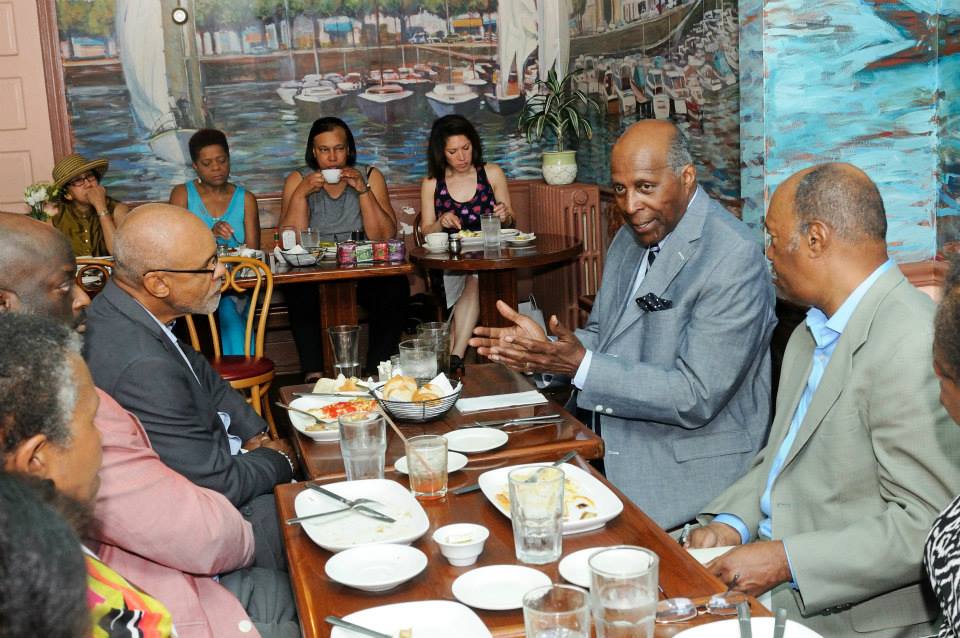 He added, “somebody laid a hand on me, and that’s what we have to do with these young people.” When it was pointed out that civil rights leaders such as Roy Wilkins of the NAACP and Whitney Young Jr. of the National Urban League are unknown to most Americans today, Jordan added his own anecdotes about people who should have been familiar with the late historian John Hope Franklin, but weren’t.
He added, “somebody laid a hand on me, and that’s what we have to do with these young people.” When it was pointed out that civil rights leaders such as Roy Wilkins of the NAACP and Whitney Young Jr. of the National Urban League are unknown to most Americans today, Jordan added his own anecdotes about people who should have been familiar with the late historian John Hope Franklin, but weren’t.
Part of the problem with some in recent generations is that “they somehow believe they got there all by themselves,” Jordan continued. In addition, preachers “preach from Isaiah but they don’t say anything about what’s in the newspapers.”
CNN added, “Jordan, born on August 15, 1935, studied law at Howard University and began his career fighting segregation, beginning with a lawsuit against University of Georgia’s integration policy in 1961. He worked as a field director for the NAACP and as a director of the Southern Regional Council for the Voter Education Project before he became president of the National Urban League.”
Defeated Black Mayor Blames Disinformation
March 1, 2021
Voters Vulnerable as ‘News Deserts’ Multiply
Covering Politics: ‘Listen More to Black People’
Ebony Reboots Online Monday Under New Owners
N.Y. Times Addresses Longtime Diversity Issues
Asian Americans Want More Coverage of Attacks
Board Folds Nonprofit After ‘I’m Not Woke’ Flap
White 4th Grader Picks Black Anchor as His Hero
Balta Casts Firing as Dispute Over ‘Objectivity’
Short Takes
Support Journal-isms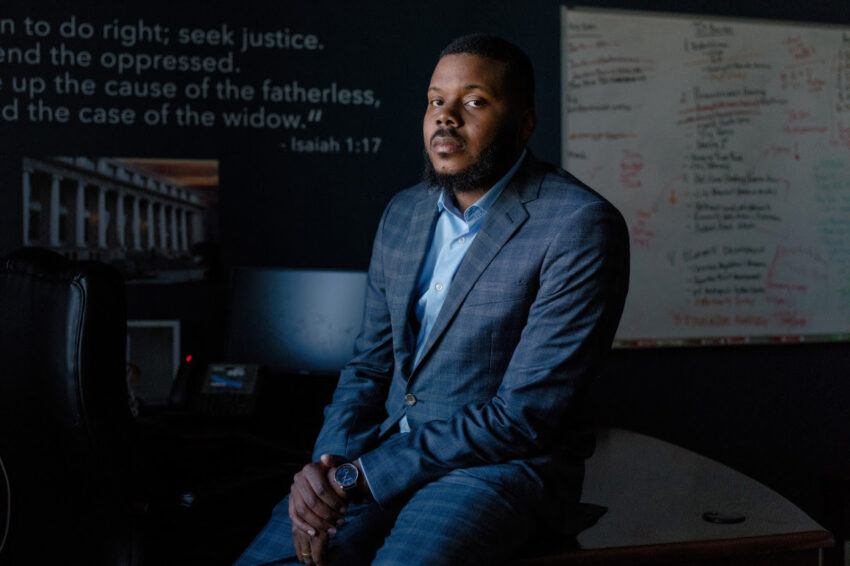
Voters Vulnerable as ‘News Deserts’ Multiply
With disinformation widely credited for the refusal of Donald Trump supporters to continue their belief that the November election was “stolen,” a 30-year-old Black mayor, thought of as a rising star, can testify that disinformation at the local level can help cost a mayor his job.
Michael Tubbs, formerly top official in Stockton, Calif., joins others in linking his defeat to a disinformation campaign that thrived with the growing irrelevance of the local newspaper. The Stockton Record, a Gannett property, has become so impotent that the area is thought of as a “news desert.”
“I made the false assumption that reality was reality and facts were facts and that people would see the truth in the matter and we’d be fine, (audio), Tubbs told Akintunde Ahmad Friday for Columbia Journalism Review.
“We just thought that by using traditional media, by being on TV all the time, . . . by writing a response to our newspaper whenever they wanted one, myself, going online and doing Instagram Lives, and Facebook Lives, where people could ask questions. We thought that would be enough, frankly. . . .”
In December, David Siders wrote a piece for Politico Magazine headlined, “The Fall of Michael Tubbs.” Siders said, “The culprit most commonly cited — by Tubbs, his supporters, his critics and neutral observers — was 209 Times.
 “Launched in 2017 by a local activist, Motecuzoma Patrick Sanchez (pictured) who ran against Tubbs in the primary, the blog named for the local area code had spent four years mauling the mayor. And by the time of the election, it had developed a massive-for-Stockton following — nearly 120,000 people on Instagram, nearly 100,000 on Facebook.
“Launched in 2017 by a local activist, Motecuzoma Patrick Sanchez (pictured) who ran against Tubbs in the primary, the blog named for the local area code had spent four years mauling the mayor. And by the time of the election, it had developed a massive-for-Stockton following — nearly 120,000 people on Instagram, nearly 100,000 on Facebook.
“Its posts, shared throughout the city on those platforms, included a racist meme of Tubbs as a crack addict, with the text, ‘Got any more of that taxpayer money?’ and one of him with a martini, labeled, ‘When you’re too busy living your best life to notice your city’s on fire.’ The site claimed, deceptively, that Tubbs’ scholarship program was ‘missing millions of dollars.’ When officials discussed the possibility of sheltering homeless people at a county fairgrounds, it depicted the mayor as overseeing a ‘Homeless Tubbsville.’
Siders added, “In another city — or at another time in Stockton — the presence of 209 Times might not have mattered. But the guardrails of civic discourse have eroded in recent years. The local newspaper, The Record, has been butchered by budget cuts, with the newsroom listing just five reporters on its website, for a city roughly the size of Pittsburgh. The newspaper’s building is for sale, and San Joaquin County supervisors last month were considering buying it to turn into a homeless shelter. TV stations based in nearby Sacramento do little to fill the void.”
Anita Chabria, writing in November in the Los Angeles Times, reported, “Sanchez, the 209 Times founder, said the goal of his publication isn’t to be fair or balanced, though it identifies itself as a news and media company on Facebook. It also sells political and other advertising.
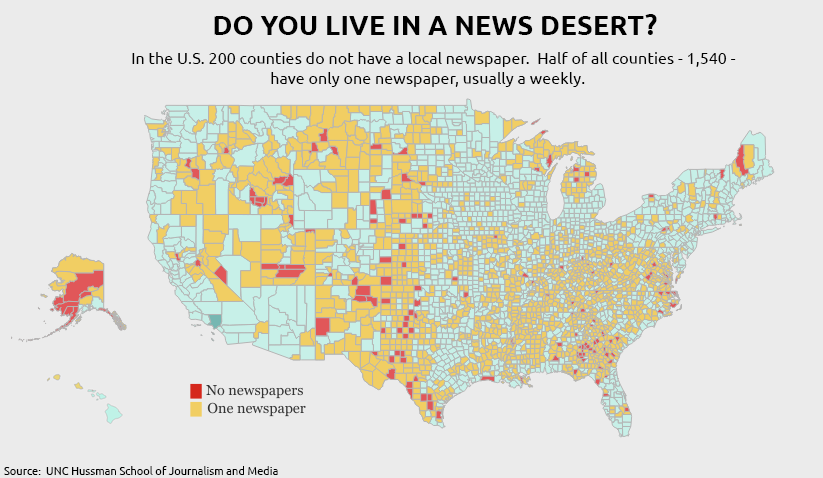
“ ‘We are not journalists. I looked at it like we were a guerrilla group up against the mainstream army,’ Sanchez said. ‘We are not asking their side of it. We are telling you what we know. We never tried to hide our bias.’ ”
In an “exit interview” on Tuesday with Kojo Nnamdi of WAMU-FM, Washington’s public radio station, retiring Washington Post Executive Editor Martin Baron said, “I think the threat to democracy comes from an aspect of the internet. And that has allowed so-called media outlets to develop that basically reinforced people’s preconceived notions of reality, when they are often divorced from reality — people who live in sort of parallel information universes — and filled with falsehoods and bizarre conspiracy theories and the like. And they turn to those media outlets for their so-called information, and they see the world through that.”
Siders, in Politico, maintains that disinformation wasn’t the only reason for the defeat of Stockton’s first Black mayor, and its youngest of any ethnicity.
“No question, the blog was a big part of it,” Siders wrote. “But it wasn’t the only reason Tubbs lost. The other reasons had more to do with Stockton itself — a scrappy city whose takedown politics are so aggressive as to verge on the bizarre — and with Tubbs’ failure to watch his flank. And as much as Tubbs’ defeat revealed about the emerging real-world power of social media and fake news, it was also an object lesson in the peril of cultivating a national profile that eclipses one’s image at home.” Tubbs was the subject of an HBO documentary last year, “Stockton on My Mind.“
The trailer for the 2020 HBO documentary, “Stockton on My Mind.” It was the second documentary made about Michael Tubbs before he was 30. (Credit: YouTube)
But Tubbs says the disinformation is reason enough for action. “Indeed, it was a four-year campaign that only works in a news desert, that only works when you’re able — the algorithm rewards racism and bigotry, and bias and only works when there is no check, there’s no certification; there’s no — nothing that says this is true, because we know the brain research tells us that we look for news that confirms our bias,” he told Columbia Journalism Review.
Tubbs added, “In Stockton, because of our population, so much of the disinformation was focused on the Latino community . . . we also have a ‘209 Time en espanol,’ like a Spanish disinformation page parroting the same garbage information. . . .
“I’m now adding disinformation as a focus area and priority area for me and an area I’m actively getting expertise. I just don’t see how a country as diverse, that has as many challenges as the United States, can really move forward if we allow disinformation to be unchecked.
“Let’s make sure we’re training our people how to think, in terms of being critical thinkers. And
also make sure that we’re holding the bad actors accountable who would seek to divide us in a
way that makes us weaker, that compromises our national security, that compromises the
integrity of our elections, that compromises the type of community we live in.
“So I definitely see myself advocating for policy and really being a voice around the dangers of
disinformation and also about the need for local press — the need for a vibrant and free press
that’s local, that has trust, that has credibility, that can be as objective as possible . . .”
“It’s not telling people what to think but training our people how to think, and making sure we’re . . . in terms of being critical thinkers, and also making sure that we’re holding bad actors accountable, who would seek to divide us in a way that makes us weaker . . . that compromises the integrity of our elections, that compromises the kind of community we live in.
“So I definitely see myself advocating for policies, doing pilots, and being a voice around the dangers of disinformation and also about the need for local press, the need for a vibrant and free press that’s local, that has trust, that has credibility, that can be as objective as possible.”
Tubbs advocates stronger action by social media to identify false information, such as Twitter’s placement of a blue checkmark to verify identities.
After the November election, Sarah Mizes-Tan reported on the election loss for Capital Public Radio, based in Sacramento.
Mizes-Tan quoted Mike Fitzgerald, a former columnist for The Stockton Record. “You’re going to see this all over the country as print journalism declines and everybody’s on the Internet, more and more charlatans, they’re going to get websites. You won’t know who they are necessarily. . . .
“The only antidote is to put counter-information out there, good information, so that the public is better served,” Fitzgerald said.
To their credit, journalism foundations have prioritized local news, and newer organizations such as Report for America, founded in 2017, supplement local media by paying for additional reporters.
Mizes-Tan also wrote for CapRadio, “In the past few weeks, a new community-oriented news site called Stocktonia has launched, founded by local historian Phillip Merlo. He doesn’t see the site as countering 209 Times, but wanted to start it because he saw a news hole.”
“I don’t know if anybody’s unbiased, you know, I think I think the truth is that no journalism is objective,” Merlo said. “All good journalism should be fair. And I think that’s what I’m really interested in.”
- Rachel Abrams, New York Times: House Democrats Press Cable Providers on Election Fraud Claims
- Leandra Bernstein, Sinclair Broadcasting Group: Lawmakers spar over role of TV news in spreading misinformation
- Anita Chabria, Los Angeles Times: Rising Democratic star Michael Tubbs risks reelection defeat, thanks in part to a Stockton blog
- Leila Fadel, NPR: Site That Traffics In Misinformation Fills Void Left By Struggling Newspaper (Jan. 11)
- Aaron Gell, medium.com: The Plot to Take Down Michael Tubbs (Dec. 9)
- Daniel Lopez, Sacramento Bee: Stockton Mayor Michael Tubbs’ election loss proves dangers of Facebook disinformation (Jan. 17, updated Jan. 19)
- Teresa Mioli, LatAm Journalism Review: Digital hub aims to unite stakeholders from Latin America and the Caribbean in fight against disinformation around COVID-19
- Gary Price, Associated Press: Not Real News: An Associated Press Roundup of Untrue Stories Shared Widely on Social Media This Week
- South African Government News Agency: Fake news hurting vaccination rollout: Nzimande
- Rudy Takala, Mediaite: FCC Commissioner Blasts Attempt By House Democrats to Shut Down Fox News: ‘Chilling Transgression’ of Free Speech
- Erik Wemple, Washington Post: Hey, Democrats: Hands off Fox News’s cable carriers
In December 2019, Perry Bacon Jr. predicted on ABC’s “This Week” that Donald Trump, though unpopular, had a “very good chance” at being reelected because the Democratic candidates were growing more unpopular by the day. “Some lessons came the hard way: By being really wrong,” Bacon writes. (video)
Covering Politics: ‘Listen More to Black People’
When Washington political reporter Perry Bacon Jr. compiled a list of what he learned about covering national politics during the Trump era, his first takeaway was “Listen more to Black people.”
“It wasn’t only Black political observers who proved prescient about Trump,” wrote Bacon, who is African American and writes for fivethirtyeight.com. “But Black political observers were often the ones most bullish about Trump’s chances from the start and the most willing during his campaign and presidency to speak bluntly about his racial and at times racist language and why some of his supporters liked that language.
“By the end of Trump’s presidency, covering Trump this way was mainstream, but Black journalists were often the ones taking this first approach while white colleagues often cast Trump’s actions in racial terms only when it was no longer controversial to do so. And Black experts were often those who most forcefully rejected the argument that Trump’s appeal to voters was primarily based on feelings of ‘economic anxiety’ or that Trump’s ideas should be taken ‘seriously but not literally.’
“Two Black political experts stand out in particular. The Atlantic’s Adam Serwer argued that many of Trump’s supporters backed him because of his harshness toward conservatives’ perceived enemies (‘The Cruelty Is the Point,’ a Serwer piece was headlined.) And Ta-Nehisi Coates, then at The Atlantic, dubbed Trump ‘The First White President,’ arguing that his rise was best understood as a backlash to Obama. Those pieces were written early in Trump’s presidency but are still memorable because they ended up accurately capturing some of the main themes of his tenure in office.”
Bacon also gives a shout-out to CNN’s Don Lemon, who in his own guest shot writing the “Political Playbook” for Martin Luther King Day, wrote, “here’s what I’m looking ahead for:
“For journalists of color, who gets credit, accolades, promotions, raises and awards for holding an administration — as well as their own newsrooms and America — accountable early on? Especially when Black and brown journalists were more likely to be cancelled for speaking out than our white counterparts. I wonder how many journalists of color didn’t get hired or promoted because companies just didn’t want to deal with that in the age of Trump?“
Lemon asked, “When Black journalists in newsrooms all over America questioned Trump’s history of racism, from housing to birtherism and more, did you stand up for us or keep quiet?”
One of Bacon’s other points: Don’t be too reliant on political insiders. “The wrongheaded reliance on GOP insiders culminated in what in hindsight was a huge media mistake: initially downplaying Trump’s efforts to overturn the election results,” he wrote.
Ebony Reboots Online Monday Under New Owners
“Ebony, the Chicago-born magazine that served as the voice of Black America for more than 75 years, is set for a digital rebirth Monday under new owners.” Robert Channick reported Friday for the Chicago Tribune.
“Bought out of bankruptcy for $14 million in December by Louisville-based Bridgeman Sports and Media, a company owned by retired Milwaukee Bucks forward Ulysses ‘Junior’ Bridgeman, Ebony will relaunch with a startup mentality, a lean operation and lofty aspirations. The storied publication’s print format and its Chicago roots will be relegated to the past.
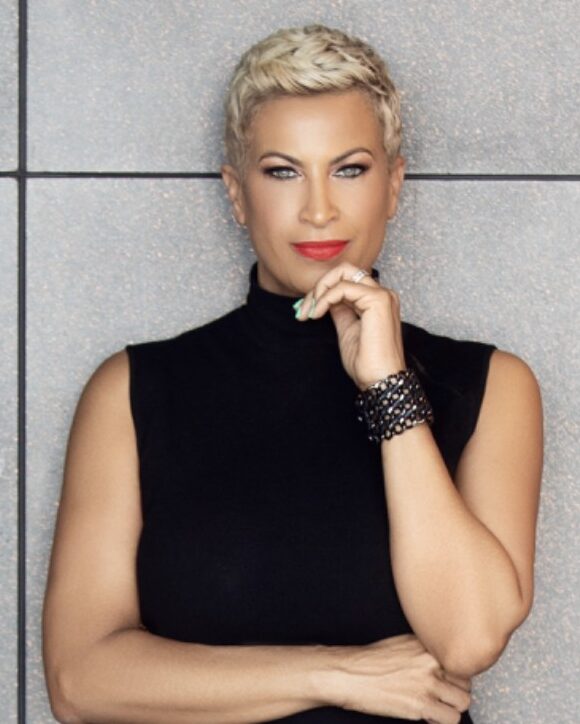 “ ‘We’re going to ask for grace, because we did this quickly,’ said Michele Ghee (pictured), 54, a media veteran who was named CEO of Ebony in January. ‘But we are in a rush to show that we have great intentions.’
“ ‘We’re going to ask for grace, because we did this quickly,’ said Michele Ghee (pictured), 54, a media veteran who was named CEO of Ebony in January. ‘But we are in a rush to show that we have great intentions.’
“A countdown clock on the website, ebony.com, highlights the March 1 relaunch. Ghee said Ebony will offer a new look as part of a plan to reclaim its cultural influence. That mission will fall on Ghee and a staff of about seven full-time employees scattered across the country. . . .”
- Rodney Ho, Atlanta Journal-Constitution: Ebony, revived digitally March 1, will be based in Atlanta

N.Y. Times Addresses Longtime Diversity Issues
The New York Times has set a goal of “increasing the representation of Black and Latino colleagues in leadership by 50 percent over the next five years,” and is committing itself to ensuring, starting in 2022, “that clearly defined diversity, equity and inclusion expectations are woven into all leaders’ assessment and compensation.”
The pledges were among several announced Wednesday in a wide-ranging internal report that found that “The Times is too often a difficult place to work for people of all backgrounds — particularly colleagues of color, and especially Black and Latino colleagues. It calls for us to transform our culture.”
The document addresses a broad spectrum of complaints from journalists of color that are voiced throughout the news business, from ideas not being taken seriously to lack of upward mobility.
“Eight months ago, against the backdrop of a societal reckoning around race, we commissioned a diverse group of senior leaders from across the company to help us examine how we were falling short within our own walls, and what it would take to change,” reads an introduction by Publisher A.G. Sulzberger, CEO Meredith Kopit Levien and Executive Editor Dean Baquet.
“We picked this group — led by Amber Guild, Carolyn Ryan and Anand Venkatesan — because they were respected truth tellers. And we told them not to pull any punches.
“Today, we’re sharing the results of their work.”
The leadership diversity pledge would raise the number of Blacks and Latinos in top jobs from 9 percent to 13.5 percent within five years. Baquet, who is Black, is expected to retire.
At the core of the report is including journalists of color in all aspects of the newsroom, especially and significantly in the evaluation and editing of stories.
“Several desks will experiment with bringing more voices and perspectives into the critical process of assigning stories and working with reporters as they develop,” it says.
“One approach will be to make sure that editors new to assigning are paired with veteran editors, allowing them to gain experience assigning, collaborating with reporters and shaping coverage as preparation for eventually stepping into more senior roles themselves. And the newsroom team is using qualitative and quantitative data to analyze how people and communities of color are represented in our coverage, both as sources and as subjects. The aim is to create an inclusive culture that emphasizes teamwork and organically incorporates diverse perspectives.
“This work should ultimately render the informal practice that some now call a ‘sensitivity read’ obsolete. These requests for additional feedback come with good intentions — for example, to determine if story framing and language hold up to our news standards and do not play into tired stereotypes — but often arrive unexpectedly, too late to remedy deep journalistic issues. The phrase itself conveys a timidness that’s out of keeping with coverage of the world without fear or favor.
“We will continue to encourage collaboration across the newsroom; another set of eyes, particularly from a different perspective, immeasurably improves our coverage. But more intentional and organic inclusion of people of color throughout the process of assigning, reporting and editing our stories should eventually curtail the need to call in journalists at the last minute to catch embarrassing gaps. For now, we will be adopting a system to enable departments to solicit added layers of editing expertise — on race or any other subject matter — in a structured way.”
The Times report additionally says, “senior leaders should be judged by how well they create pathways for a diverse group of deputies to succeed them.” In many newsrooms, diversity edicts from the top have been blocked by indifferent middle managers without consequences.
The practice of linking overall compensation to progress on diversity goals, a concept known as pay at risk, was a strategy successfully used by the late Al Neuharth, CEO of the Gannett Co. Last year, Gannett, the owner of USA Today and more than 260 local news operations, announced a broad initiative to make its workforce as diverse as the country by 2025, and pay at risk remains part of its policy.
As Thomas Lee reported for sfgate.com in 2014, “Linking pay to diversity is not as audacious as it sounds. Verizon, Dell, Coca-Cola and Kraft base top managers’ pay on diversity initiatives, as do several hospitals and nonprofits. According to a report last year by Calvert Investments, 42 percent of the companies in the Standard & Poor’s 100 index link executive compensation to diversity goals.”
- David Bauder, Associated Press: NY Times Says It Needs Culture Change, Better Inclusion
- Thomas Moore, The Hill: New York Times culture not enabling workers to thrive, diversity report says
- New York Times Co.: New Reporter in Sports (Emmanuel Morgan)
- New York Times Co.: Lisa Chow Named Editor of “The Daily”
- New York Times Co.: The New York Times Announces “Black History, Continued”
- Marc Tracy, New York Times: Ex-Times Reporter Who Used Racial Slur Publishes a Lengthy Defense
- Laura Hazard Owen, Nieman Lab: ‘That’s not Timesean’ can be used to exclude”: The New York Times gives the big report treatment to enacting “sweeping” cultural change
Latest statement from Washington Post National Editor @stevenjay on the harassment of reporter Seung Min Kim pic.twitter.com/2mXpshvYlZ
— Kristine Coratti Kelly (@kriscoratti) February 25, 2021
Asian Americans Want More Coverage of Attacks
“The recent spike in attacks against Asian Americans [is] part of a larger trend that deserves more media coverage, said ‘Nightline’ co-anchor Juju Chang and CBS News White House correspondent Weijia Jiang,” Angela Fu wrote on Thursday for the Poynter Institute.
“The broadcast journalists joined Poynter senior adviser and faculty member Joie Chen Thursday to discuss recent media coverage of violence against Asian Americans. The conversation was part of Poynter’s On Poynt series, which features interviews with journalists for the story behind the story of current events.”
The session took place as attacks on Asian Americans are receiving increased media attention, as the Asian American Journalists Association is crowdsourcing reports of anti-Asian American incidents, and as the Washington Post issued a statement condemning online attacks on White House correspondent Seung Min Kim. She was photographed showing Sen. Lisa Murkowski, R-Alaska, a critical tweet from Neera Tanden, President Biden’s nominee for Office of Management and Budget director.
Fu’s story continued, “Though many of the attacks that have garnered significant media coverage have taken place on the coasts — most notably the Bay Area and New York City — Chang said the problem has been much more widespread.
“ ‘I think that we’re getting at some of the roots of the otherness that Asian Americans have been subject to for decades,’ Chang said. ‘This is something that spreads across the entire spectrum, both geographically, socioeconomically and ethnically across our country.’ . . .”
- Anne Anlin Cheng, New York Times: What This Wave of Anti-Asian Violence Reveals About America (Feb. 21)
- Major Garrett, “The Debrief With Major Garrett,” CBS News: Virus of Hate (podcast)
- Dion Lim, KGO-TV, San Francisco: EXCLUSIVE: Former Bay Area gang member arrested after threatening to kill Asians online
- Bianca Mabute-Louie, Elle: For Asian Americans, Sharing Our Grief Is An Act Of Revolution
- Tabasa Ozawa, AsAmNews: Going from anger to seeking solutions to racism (Feb. 16)
- Melissa Pandika, mic.com: I want justice for anti-Asian violence — but not at the expense of Black people (Feb. 10)
- Doris Truong, Poynter Institute: A rule for good journalism: What is missing from this story?
Board Folds Nonprofit After ‘I’m Not Woke’ Flap
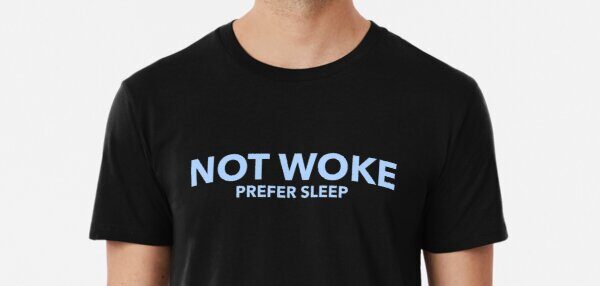 The founder of a California journalism nonprofit who denied he told an applicant he was not interested in diversity has resigned and the board of directors has decided to dissolve the company.
The founder of a California journalism nonprofit who denied he told an applicant he was not interested in diversity has resigned and the board of directors has decided to dissolve the company.
“This step is taken with regret as the small journalism nonprofit has devoted the last 11 years to protecting the public from harms to their health and safety,” the board of FairWarning said in a Feb. 19 statement. “Circumstances beyond the board’s control have unfairly damaged FairWarning’s reputation and made it difficult to carry on a small-budget news organization dependent on charitable donations.”
The statement listed a roster of accomplishments. Among them, “FairWarning was an early investigator of the cancer risks from talc powders; examined the racial politics of menthol cigarettes and told how giant tobacco companies use trade treaties to fight anti-smoking measures around the world. It revealed a disinformation campaign by the indoor tanning industry to hide the risk of skin cancer.”
 On Feb. 2, Matt Krupnick, who is white, tweeted that he was offered an editor’s job by FairWarning’s founder and editor, Myron Levin (pictured). “I noted to the founder/editor that diversity seemed to be a challenge there. The entire staff (and board) is white and I haven’t found a single article written by a person of color. When I mentioned to the editor that I wanted to diversify the freelance pool, this was his response: ‘We’re not woke.’
On Feb. 2, Matt Krupnick, who is white, tweeted that he was offered an editor’s job by FairWarning’s founder and editor, Myron Levin (pictured). “I noted to the founder/editor that diversity seemed to be a challenge there. The entire staff (and board) is white and I haven’t found a single article written by a person of color. When I mentioned to the editor that I wanted to diversify the freelance pool, this was his response: ‘We’re not woke.’
In his farewell note, posted along with the board’s statement, Levin said Krupnick’s message “contained serious inaccuracies and distortions. Nonetheless, in response to the attack our two staff writers, including one who has worked here nearly three years, went on Twitter to publicly demand that our board force me to resign.
“The board refused to do this, but we have been crippled. Hiring new staff and recruiting a strong new leader under these circumstances would be difficult, to say the least. And so, the board and I have decided that the best course is for FairWarning to shut down.
“We’ll be winding things down over the next few weeks. We won’t be accepting new donations, and we plan to donate the balance of our funds to another worthwhile nonprofit news organization.”
(Credit: WRC-TV) (video)
White 4th Grader Picks Black Anchor as His Hero
A 9-year-old white boy decided to do something different for his Black History Month presentation in school: He chose to research Jim Vance, the late Washington, D.C., television anchor and inductee into the National Association of Black Journalists Hall of Fame.
Doreen Gentzler, Vance’s former co-anchor at NBC owned-and-operated WRC-TV, reported Friday that “Eli Kauffman of Upper Marlboro, Maryland, dressed up like Vance and shared a newsworthy report for his fourth-grade class that his mother shared on social media.
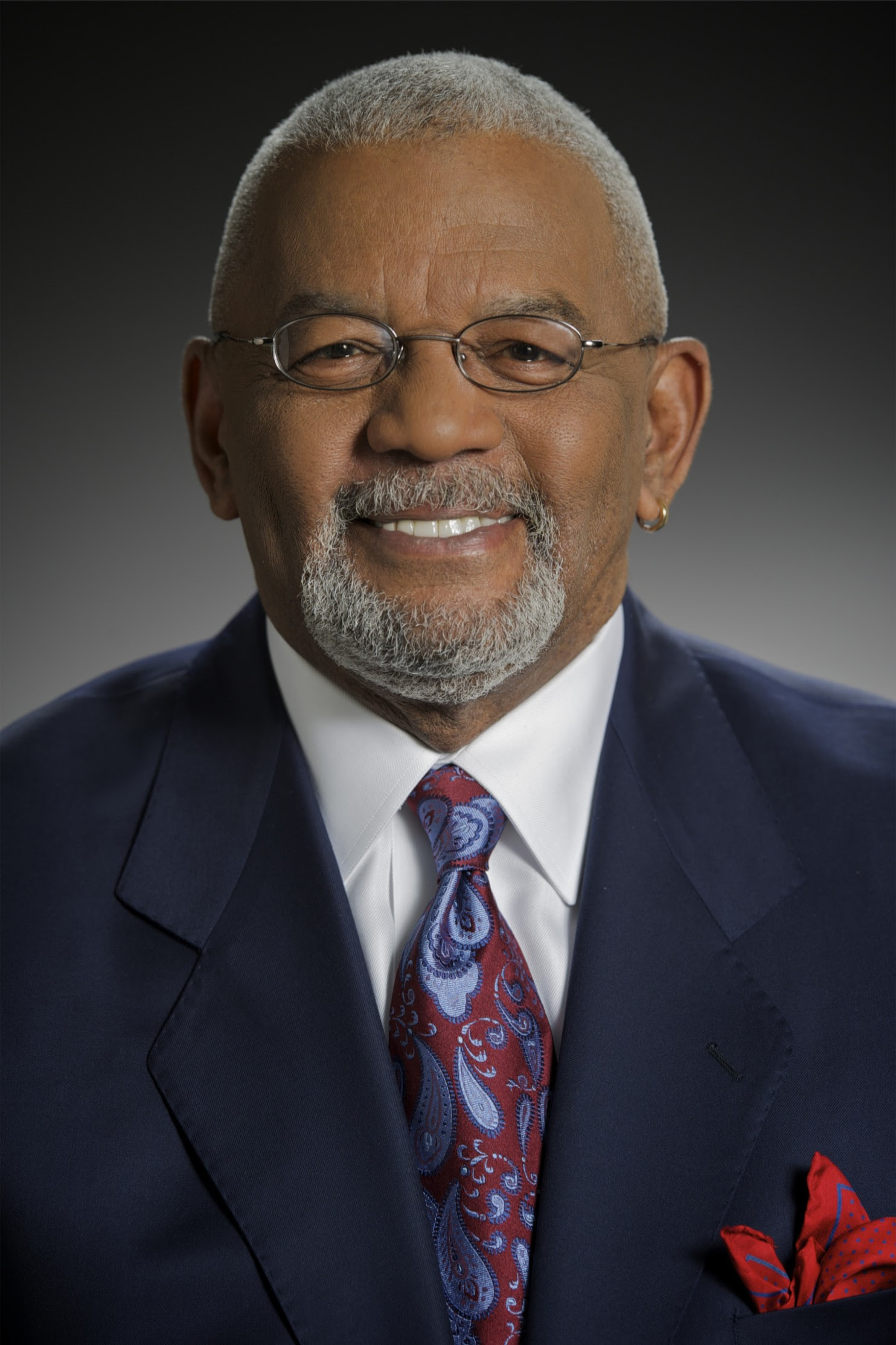 “ ‘I see a lot of people pick Martin Luther King (Jr.) and Rosa Parks, so I just wanted to be different and choose Jim Vance (pictured),’ Eli said.
“ ‘I see a lot of people pick Martin Luther King (Jr.) and Rosa Parks, so I just wanted to be different and choose Jim Vance (pictured),’ Eli said.
“His mom helped him to dress up like Vance. For his presentation he wore a suit and tie, a beard and glasses, and, of course, an earring. . . .”
The Vance impersonation was just one of several ways that Black journalists figured in this year’s Black History Month commemorations.
The Chicago Tribune profiled Roi Ottley, the first locally based Black writer hired by the Chicago Tribune, and surely another candidate for the NABJ Hall of Fame.
“Ottley was a major figure among Black journalists and was the first African American war correspondent for major newspapers during World War II. He wrote human interest stories about Black soldiers, witnessed Italian dictator Benito Mussolini’s execution and even interviewed Pope Pius XII,” Bob Goldsborough wrote on Feb. 18. A report on Mark A. Huddle’s collection of Ottley’s dispatches from World War II appeared in this space in 2013.
Alix Strauss of The New York Times wrote about John Johnson, one of the first Black producer/directors for network television in New York.
“Mr. Johnson bought his Rockland County home — an A-frame with a pitched roof that sits on two acres of woods — as a country escape in 1992. His art studio is there, as is a photography studio for his wife, Ann Yih, 57, who is a retired news producer. ‘Moving here was intuitive, as we’re living a very isolated life right now,’ Mr. Johnson, 82, said.”
In Wilmington, Del., legislators voted to rename a post office to honor Mary Ann Shadd Cary, the first Black woman to establish and edit a North American newspaper.
Cary was also a suffragist and helped recruit African American soldiers for the Civil War.
Some stations put Black reporters on the air to discuss their experiences. Keydra Manns
of The Grio “spoke to four meteorologists from The Weather Channel, which is Black-owned, who shared what it means to be Black in media and their thoughts on Black History Month.” The four are Paul Goodloe, Britney Hamilton, Alex Wallace and Tevin Wooten.
In Los Angeles, Cora Jackson-Fossett of the Sentinel reported, “Through [a] forum called ‘African American Equity in Media,’ the new city agency known as L.A. Civil Rights brought together three representatives of the city’s leading media to review how Blacks are represented in newsrooms and news coverage. LA Civil Rights Executive Director Capri Maddox moderated the event, which featured Beverly White, NBC4 news reporter; Angel Jennings, L.A. Times assistant managing editor of culture and talent; Brandon Brooks, L.A. Sentinel and L.A. Watts Times editor.”
In Birmingham, Ala., Emma Simmons wrote Thursday for WSAV-TV that “we reflected on the challenges facing the industry, as experienced by three Black television news trailblazers: Carole Simpson, former anchor of ABC World News Tonight; Bob Jordan, former anchor at WGN-TV Chicago; and Monica Pearson, former anchor at WSB-TV Atlanta. WFLA-TV anchor and reporter Rod Carter moderated the discussion.”
In some cases, the commemoration was personal. Sharon Epperson, CNBC’s senior personal finance correspondent, survived a brain hemorrhage due to a ruptured aneurysm in September 2016, and now is “part of a scientific study that looks at the brains of those who have survived brain hemorrhages . . .,” Kerry Breen reported Friday for NBC’s Today website. Epperson said that she’s “been thinking about the topic during Black History Month, as she discusses her family history.”
Writing Feb. 19 in the Los Angeles Times, Erin Aubry Kaplan brought the discussion to today’s headlines. “Every year during Black History Month, the heroes of Brown vs. Board of Education — most prominently, Thurgood Marshall, who argued the case in the Supreme Court — are go-to figures for celebration.
“But we don’t talk much about the white history of fierce resistance, the actions that undercut desegregation over decades and reduced so many public schools to spaces for the unwanted and dispossessed. It’s a legacy we’ve lived with for so long, we’ve lost sight of it as a crisis.”
- Caesar Andrews, University of Nevada, Reno: The role of authentic Black history as America moves forward (Feb. 16)
- Kayleigh Barber, Digiday: How The Atlantic’s Black history project turned into a 7-figure deal with Salesforce
- Karen Grigsby Bates, Shereen Marisol Meraji, Jess Kung and Leah Donnella, NPR “Code Switch”: Black Kiss-tory (Feb. 10)
- David Bauder, Associated Press: ABC To Air Black Experience Newsmagazine (Feb. 12)
- Tyrone Beason, Los Angeles Times: A Black reporter’s road trip to the inauguration — and a search for America’s ‘soul’ (Feb. 7)
- Rebecca Carroll, NBC Think: White adults parroted stereotypes when I wanted to see pictures of my Black birth father (Feb.2)
- Mary C. Curtis, PBS North Carolina: Removing Confederate Monuments & “Defund the Police“ (video) (Feb. 19)
- Paul Greeley, TVNewsCheck: Louisville’s WHAS Highlights ‘Moments That Matter’ For Black History Month (Feb. 15)
- Jeff Jacoby, Boston Globe: The racial decency — and irony — of Rutherford Hayes: He was a steadfast champion of Black voting rights, yet he presided over the end of Reconstruction. (Feb. 15)
- Wendy Lee, Los Angeles Times: ALLBLK was the first streamer to feature Black creators. Now it’s launching a talk show (Feb. 11)
- Alison Bethel McKenzie, Report for America: Celebrating Black History: Renaissance of the Black press
- Mark K. Miller, TVNewsCheck: Fox Soul’s ‘Screening Room’ To Spotlight Black Short Feature Filmmakers (Feb. 3)
- Darcel Rockett, Chicago Tribune: 9 of Chicago’s most influential Black leaders are making real strides toward diversity at the city’s top institutions, from CPS to the Cubs (Feb. 11)
- Ernie Suggs, The Atlanta Journal-Constitution: For many, an Afro isn’t just a hairstyle: How a quarantine Afro helped me explore my Blackness and identity
- Erica R. Williams, Tri-State Defender, Memphis: Telling the story! Ida B. Wells’ legacy: a point of measurement, path forward (Feb. 18)
- Sara Wilson, WDHN-TV, Dothan, Ala.: Dothan radio host tells story of trailblazing for black broadcasters (Feb. 10)
- WLWT-TV, Cincinnati: Hamilton County commissioners proclaim Feb. 12 as ‘Courtis Fuller Day’ (Feb. 11)
Balta Casts Firing as Dispute Over ‘Objectivity’
“I was wrongfully terminated last week because I don’t hide behind the handicap of objectivity as if journalists can check their humanity at the door,” Hugo Balta (pictured below), the former president of the National Association of Hispanic Journalists who was fired as news director of Chicago’s public television station, WTTW, wrote Wednesday in the Chicago Sun-Times.
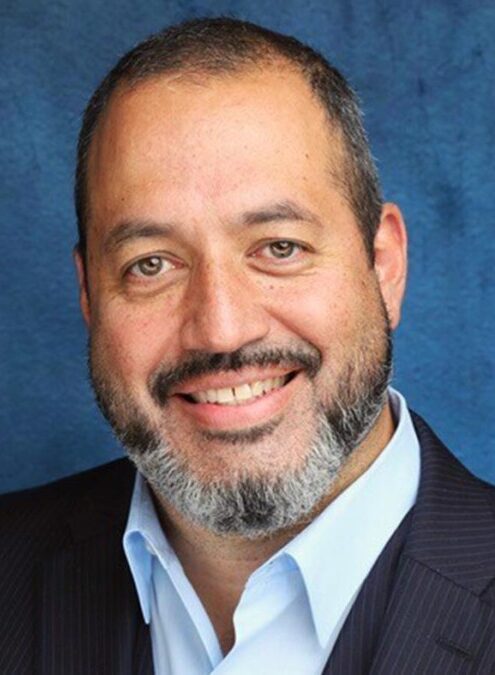 “I subscribe to transparency in the pursuit of truth. By acknowledging my own biases, I surround myself with people who don’t often share the same experience, background and ideologies. It is by engaging with them in discourse about story coverage, those who tell the stories, and those who have the chance to be heard that we ensure fair and accurate coverage.
“I subscribe to transparency in the pursuit of truth. By acknowledging my own biases, I surround myself with people who don’t often share the same experience, background and ideologies. It is by engaging with them in discourse about story coverage, those who tell the stories, and those who have the chance to be heard that we ensure fair and accurate coverage.
“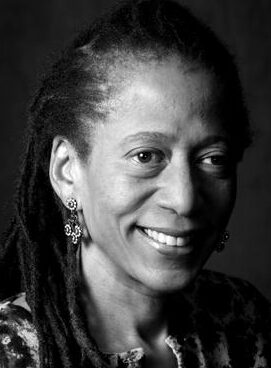 In an interview with Sun-Times columnist Laura Washington (pictured), Phil Ponce, longtime host of ‘Chicago Tonight’ defended journalistic objectivity. ‘Objectivity is, you know, it’s at the core of “Chicago Tonight’s” DNA,’ he said. ‘If we become partisan and political, or people think we are, I mean, at that point, we’ve lost our credibility and relevance.’
In an interview with Sun-Times columnist Laura Washington (pictured), Phil Ponce, longtime host of ‘Chicago Tonight’ defended journalistic objectivity. ‘Objectivity is, you know, it’s at the core of “Chicago Tonight’s” DNA,’ he said. ‘If we become partisan and political, or people think we are, I mean, at that point, we’ve lost our credibility and relevance.’
“Objectivity proposes that there are two sides to every story. But in fact, there are many perspectives, and the ones most often left out are from marginalized communities whose representation is absent from newsrooms.
“It is objectivity that dilutes the coverage of systemic racism in government, health care, education, employment, victimizing communities that are not looking for handouts to survive but a fair chance to thrive.
“Ponce sent posts from my personal Instagram account to WTTW’s news department that he deemed as ‘overtly political.’ Among them was a post celebrating Kamala Harris on Inauguration Day.
“Kamala Harris. The first woman to be elected vice president. The first woman of color to be elected vice president.
“That post was not political; it was about a historic moment.
“Laura Washington wrote: ‘Like every legacy news operation, it (WTTW) can always do more to cover and reflect communities of color.’
“But how long do people of color have to wait?”
Short Takes
- Jasmine Minor, reporter and fill-in anchor at WCPO-TV in Cincinnati, has launched Everything We Can’t Say, “a platform about creating an honest, open space.” The first series is “a focus on the challenges Black Journalists face in the field, at work and in their personal lives.” Above, she reads some of the contributions from the journalists. (Credit: YouTube.)
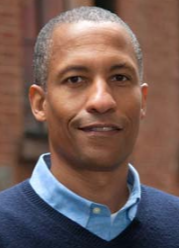 John Simons (pictured) joins Time magazine as executive editor on March 1, Edward Felsenthal, Time editor-in-chief and CEO and Sam Jacobs, deputy editor, announced on Feb. 16. “John will oversee business, technology and nation coverage. In this new role, John joins the editorial leadership team helping guide our overall strategy and coverage across all platforms,” they wrote. “John comes to us from The Wall Street Journal where he was most recently deputy health and science editor and bureau chief for health business. . . .”
John Simons (pictured) joins Time magazine as executive editor on March 1, Edward Felsenthal, Time editor-in-chief and CEO and Sam Jacobs, deputy editor, announced on Feb. 16. “John will oversee business, technology and nation coverage. In this new role, John joins the editorial leadership team helping guide our overall strategy and coverage across all platforms,” they wrote. “John comes to us from The Wall Street Journal where he was most recently deputy health and science editor and bureau chief for health business. . . .”
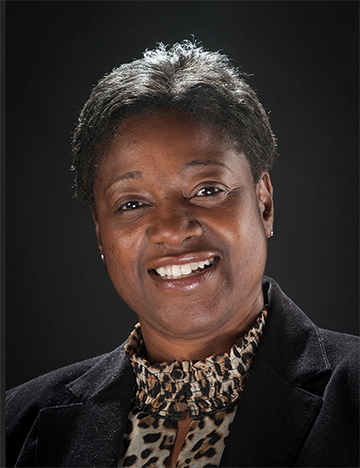 “Mary Irby-Jones (pictured), top editor for the Clarion Ledger and Hattiesburg American, is leaving Mississippi to lead the Courier Journal newsroom in Louisville, Kentucky, USA TODAY Network South Regional Editor Michael Anastasi announced Tuesday,” Marlon A. Walker reported for the Clarion Ledger. “Irby-Jones, a Mississippi native and veteran journalist with more than 30 years of professional experience, will join the Courier Journal on March 12 as executive editor. She became editor of the Clarion Ledger in January 2020.”
“Mary Irby-Jones (pictured), top editor for the Clarion Ledger and Hattiesburg American, is leaving Mississippi to lead the Courier Journal newsroom in Louisville, Kentucky, USA TODAY Network South Regional Editor Michael Anastasi announced Tuesday,” Marlon A. Walker reported for the Clarion Ledger. “Irby-Jones, a Mississippi native and veteran journalist with more than 30 years of professional experience, will join the Courier Journal on March 12 as executive editor. She became editor of the Clarion Ledger in January 2020.”
- “The Biden administration’s release of a CIA report on the murder of Saudi journalist Jamal Khashoggi has confirmed what has been widely known since the fall of 2018: The killing was approved by Crown Prince Mohammed bin Salman, the kingdom’s de facto ruler,” the Washington Post, which published Khashoggi’s columns, editorialized on Friday. “At a minimum, the administration ought to require, as a condition for normal relations, that the architect of the Khashoggi murder and other human rights offenses — Saud al-Qahtani, a close aide of MBS named in the CIA report — be brought to justice. If the criminal apparatus MBS employed against Khashoggi is not dismantled, there will be more victims.”
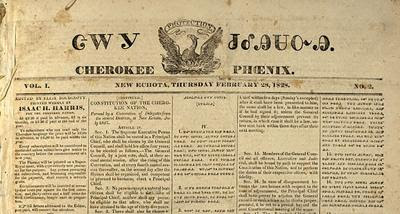
‘To obtain a correct and complete knowledge of these people, there must exist a vehicle of Indian intelligence, altogether different from those which have heretofore been employed,’ Elias Boudinot, the Cherokee Phoenix’s first editor, said.” Depicted is the newspaper’s second edition.
- “We sent requests for data-use agreements to 56 states and territories to learn what vaccination data was being shared with the federal government,” Caitlin Antonios, Mohar Chatterjee, Georgia Gee, Derek Kravitz and Kyra Senese reported Feb. 16 for the COVID Tracking Project. “We found that several states — including California and Texas — aren’t sharing race and ethnicity data on vaccinations with the CDC, citing patient privacy laws. In better news, most states are.” The report is a collaboration with the Documenting COVID-19 project at Columbia University’s Brown Institute for Media Innovation and The COVID Tracking Project at The Atlantic.
- New York state, which licenses and inspects all 613 nursing homes in New York, allowed the facilities to administer hydroxychloroquine to patients exposed to COVID-19, even after public health experts cautioned against its use in non-hospital settings or for elderly and vulnerable patients, Dean Russell and Yoav Gonen wrote Feb. 8 in collaboration with The City, Columbia Journalism Investigations and Type Investigations. The story is part of “Missing Them,” The City’s ongoing collaborative project to remember every New Yorker killed by COVID-19. Between March and late April last year, the 250-bed New York State Veterans’ Home at St. Albans “administered hundreds of doses of the unproven drug combination to at least 62 residents, some of whom had not tested positive for the virus, according to interviews, medical records and other documents . . . “
- “The Los Angeles Times is expanding its utility journalism offerings with the launch of a Spanish-language version of its digital coronavirus tracker, ‘El coronavirus en California,’ ” the Times reported Feb. 22. ”Mapping the extent of coronavirus cases in California through an independent, continual survey of dozens of local health agencies across the state, the tracker will publish daily updates and data analysis in Spanish on latimes.com/espanol and in the L.A. Times mobile app.”
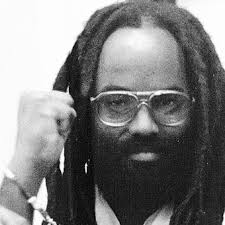 “Supporters of Mumia Abu-Jamal (pictured) who was convicted of killing a Philadelphia police officer in 1981, held a noon rally in front of the District Attorney’s Office on Saturday, contending he has COVID-19 and renewing their demands he be released from prison,” Marie McCullough and Heather Khalifa reported Saturday for the Philadelphia Inquirer.
“Supporters of Mumia Abu-Jamal (pictured) who was convicted of killing a Philadelphia police officer in 1981, held a noon rally in front of the District Attorney’s Office on Saturday, contending he has COVID-19 and renewing their demands he be released from prison,” Marie McCullough and Heather Khalifa reported Saturday for the Philadelphia Inquirer.
- Leaders of the Native American Journalists Association are asking members to consider changing the name of the organization to the Indigenous Journalists Association. “This change recognizes the need to develop relationships, contacts, and cooperation across international borders and reflects a desire to align terminology with the United Nations Declaration on the Rights of Indigenous Peoples.”
- “Four hours of morning television is a lot of time to fill, but new Black News Channel hosts Mike Hill and Sharon Reed don’t expect to run out of things to say,” David Bauder reported Friday for the Associated Press. “Their new program, which debuts Monday at 6 a.m. Eastern, is the centerpiece of Black News Channel’s relaunch to emphasize commentary and a more analytical approach to the news.” Bauder also wrote, “BNC was available in only 2.5 million homes via cable or satellite when it started, and is now up to 52 million, or a little more than half of those available, [CEO Princell] Hair said. It started with access to 50 million Internet-connected devices and is now up to 180 million.”
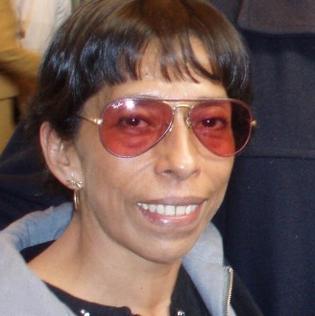 The George Polk Awards recognized The Washington Post in justice reporting for “George Floyd’s America,” “a six-part series by a team of seven bylined reporters that documented the life, community and experiences of Mr. Floyd, a Black man who was killed in May by the Minneapolis police, a death that touched off protests nationwide,” Marc Tracy reported Wednesday for The New York Times. Tracy also wrote, “Several other awards honored work that described racism in the United States and a summer of protests.” In addition,” a special prize was given posthumously to Regina Martínez (pictured) of the Mexico City magazine Proceso, and to the investigative-journalism collective Forbidden Stories, which reported last year that authorities had stymied an investigation into Ms. Martínez’s death in 2012 while she was reporting on disappeared persons in the state of Veracruz.”
The George Polk Awards recognized The Washington Post in justice reporting for “George Floyd’s America,” “a six-part series by a team of seven bylined reporters that documented the life, community and experiences of Mr. Floyd, a Black man who was killed in May by the Minneapolis police, a death that touched off protests nationwide,” Marc Tracy reported Wednesday for The New York Times. Tracy also wrote, “Several other awards honored work that described racism in the United States and a summer of protests.” In addition,” a special prize was given posthumously to Regina Martínez (pictured) of the Mexico City magazine Proceso, and to the investigative-journalism collective Forbidden Stories, which reported last year that authorities had stymied an investigation into Ms. Martínez’s death in 2012 while she was reporting on disappeared persons in the state of Veracruz.”
- “In a series of major tests for press freedom, at least four journalists around the country will face trial this month following their arrests while covering Black Lives Matter protests, part of the unprecedented number of legal detentions of reporters in 2020,” Kirstin McCudden, managing editor, US Press Freedom Tracker, reported Thursday. “While the majority of the 126+ journalists arrested or detained last year were released without charges — and some who faced charges saw them dropped before trial — a number of reporters have lived under the shadow of pending charges for months.”
- “The eight ABC Owned Television Stations are a small group that thinks big, and their new project, which was recently awarded a grant from the Google News Initiative Innovation Challenge, is just the latest example,” Andrew Heyward of the Walter Cronkite School of Journalism wrote for the Cronkite News Lab. “Our America: Hidden Stories is a series of broadcast and digital reports and specials that seeks to address systemic racism with a distinctive combination of historical perspective, inspiring stories from today, and hard numbers. It’s an approach that stretches the traditional role of the newsroom in order to promote social change. ‘I don’t think it’s enough for local journalists to just tell the stories anymore. It’s critical that we inspire and empower our communities to take action,’ says Anna Robertson, vice president of content and partner innovation at the group.”
 After the Los Angeles Times determined that the Hollywood Foreign Press Association, which doles out the Golden Globe Awards , has no Black member, an association representative told the Times on Thursday, “We are fully committed to ensuring our membership is reflective of the communities around the world who love film, tv and the artists inspiring and educating them. We understand that we need to bring in Black members, as well as members from other underrepresented backgrounds, and we will immediately work to implement an action plan to achieve these goals as soon as possible,” Josh Rottenberg reported Thursday for the Times. The Globes were awarded Sunday.
After the Los Angeles Times determined that the Hollywood Foreign Press Association, which doles out the Golden Globe Awards , has no Black member, an association representative told the Times on Thursday, “We are fully committed to ensuring our membership is reflective of the communities around the world who love film, tv and the artists inspiring and educating them. We understand that we need to bring in Black members, as well as members from other underrepresented backgrounds, and we will immediately work to implement an action plan to achieve these goals as soon as possible,” Josh Rottenberg reported Thursday for the Times. The Globes were awarded Sunday.
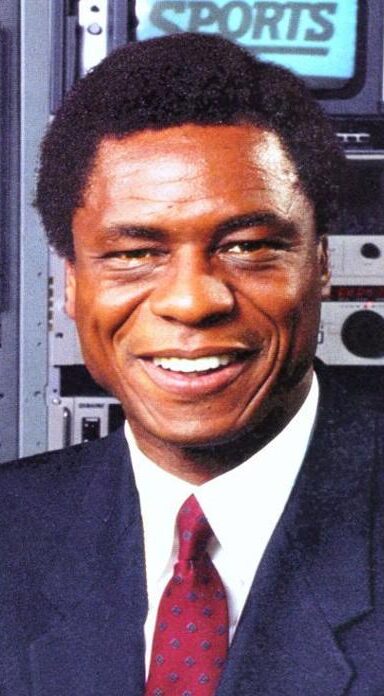 “Irv Cross (pictured), a two-time Pro Bowl cornerback for the Eagles who later became the first Black host of an network NFL pregame show, died Sunday morning at his home in Roseville, Minn., the team announced,” Les Bowen reported for the Philadelphia Inquirer. “He was 81. . . . he gained national fame in the 1970s on CBS’ NFL Today, with Brent Musburger, Phyllis George, and Jimmy ‘The Greek’ Snyder. He also was the first Black person to do TV sports reports in Philadelphia, and was in the first wave of Black network color analysts.” Cross told the Inquirer in 2018 that he had been diagnosed with mild cognitive dementia.
“Irv Cross (pictured), a two-time Pro Bowl cornerback for the Eagles who later became the first Black host of an network NFL pregame show, died Sunday morning at his home in Roseville, Minn., the team announced,” Les Bowen reported for the Philadelphia Inquirer. “He was 81. . . . he gained national fame in the 1970s on CBS’ NFL Today, with Brent Musburger, Phyllis George, and Jimmy ‘The Greek’ Snyder. He also was the first Black person to do TV sports reports in Philadelphia, and was in the first wave of Black network color analysts.” Cross told the Inquirer in 2018 that he had been diagnosed with mild cognitive dementia.
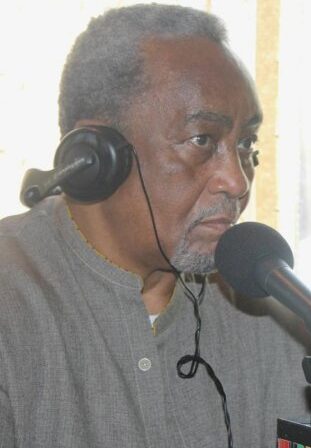 “Cody Anderson (pictured), the first General Manager of WURD, Philly’s only African American owned and operated talk radio station, died from complications of COVID-19 on Saturday, David Chang reported Feb. 21 for WCAU-TV. “He was 78 and would have turned 79 on Thursday. Anderson was also the longtime GM and president of WDAS-FM 105.3 FM and a former owner of WHAT-1340 AM.”
“Cody Anderson (pictured), the first General Manager of WURD, Philly’s only African American owned and operated talk radio station, died from complications of COVID-19 on Saturday, David Chang reported Feb. 21 for WCAU-TV. “He was 78 and would have turned 79 on Thursday. Anderson was also the longtime GM and president of WDAS-FM 105.3 FM and a former owner of WHAT-1340 AM.”
- “A longstanding dispute over who can be considered a citizen of the Cherokee Nation finally came to a conclusion this week,” Harmeet Kaur reported Thursday for CNN. “The Cherokee Nation Supreme Court ruled on Monday that the tribal nation remove the phrase ‘by blood’ from its constitution and other tribal laws. That change formally acknowledges that the descendants of Black people once enslaved by the tribe — known as the Cherokee Freedmen — have the right to tribal citizenship, which means they are eligible to run for tribal office and access resources such as tribal health care.” Among the Cherokee Freedmen are journalists Sam Ford, reporter at WJLA-TV in Washington, and Kenneth J. Cooper, senior editor at WGBH News in Boston.
- “Author and journalist Ta-Nehisi Coates is set to write the new Superman movie for DC Films and Warner Bros.,” Leia Idliby reported Friday for Mediaite. “J.J. Abrams’ Bad Robot will produce the film along with Hannah Minghella, but there is no news of who will direct or star in the movie.”
 A. Sherrod Blakely (pictured), a freelance contributor to the Bleacher Report and chairman of the Sports Task Force of the National Association of Black Journalists, has joined the Boston Sports Journal as an NBA columnist/contributor, editor Greg Bedard confirmed Friday.
A. Sherrod Blakely (pictured), a freelance contributor to the Bleacher Report and chairman of the Sports Task Force of the National Association of Black Journalists, has joined the Boston Sports Journal as an NBA columnist/contributor, editor Greg Bedard confirmed Friday.
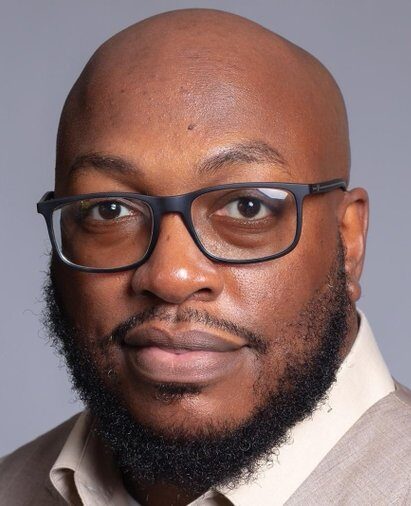 Gabriel Stovall (pictured), self-described sports nerd and newsroom junkie, has been named assistant sports editor of the Courier Journal in Louisville, Ky. As a property of the Gannett Co, the Courier Journal is part of a drive to match the percentage of journalists of color on staff with that of the population in their market by 2025. Stovall was appointed by sports director Reina Kempt, named sports director in August and also a Black journalist. Stovall wrote readers Friday, “Reina’s leadership here has been impactful. My aim is to simply employ my passion for storytelling, multimedia journalism and pushing writers to the limits of their creativity to strengthen what’s already a stalwart sports team — one of the best I’ve seen.”
Gabriel Stovall (pictured), self-described sports nerd and newsroom junkie, has been named assistant sports editor of the Courier Journal in Louisville, Ky. As a property of the Gannett Co, the Courier Journal is part of a drive to match the percentage of journalists of color on staff with that of the population in their market by 2025. Stovall was appointed by sports director Reina Kempt, named sports director in August and also a Black journalist. Stovall wrote readers Friday, “Reina’s leadership here has been impactful. My aim is to simply employ my passion for storytelling, multimedia journalism and pushing writers to the limits of their creativity to strengthen what’s already a stalwart sports team — one of the best I’ve seen.”
- “The family of Malcolm X is demanding a new investigation into his 1965 assassination in light of the deathbed confession of a former New York police officer who said police and the FBI conspired to kill the Black leader,” “Democracy Now! “reported on Friday. However, Karl Evanzz, who has written several books about the Nation of Islam and the Malcolm X assassination, says the confession is a hoax. “People, you can’t make this stuff up,” Evanzz wrote Saturday on his blog. “I mean that literally. You can’t make up stuff so important to African American history and its leaders and think that no one is going to question you.” He calls “this concocted alleged confession . . . asinine.”
- “In a new ‘Reply All’ episode, Alex Goldman, one of the longtime hosts of the popular Gimlet Media podcast, apologized to listeners of ‘The Test Kitchen’ and announced that the recent miniseries will not continue amid scrutiny of Gimlet’s work environment,” Justin Ray wrote Thursday for the Los Angeles Times. ” ‘The Test Kitchen,’ which was planned to span four episodes, detailed the structural racism and toxic work environment at the food magazine Bon Appétit,” . . . However, the Feb. 16 Twitter thread of former Gimlet staffer Eric Eddings “alleged that the people behind ‘Reply All’ were responsible for creating a similarly toxic workplace at Gimlet. . . .”
 Mark J. Rochester, (pictured) a veteran investigative journalist and board member of Investigative Reporters and Editors, is joining @inewsource, a nonprofit investigative newsroom based in San Diego, Calif. Rochester, currently editor in chief at Type Investigations, will be managing editor, said CEO Lorie Hearn, a former reporter and editor at the San Diego Union Tribune who founded @inewsource in 2009. The operation partners with public media in the area and expects to grow to 27 employees by the end of 2022, Hearn told Journal-isms.
Mark J. Rochester, (pictured) a veteran investigative journalist and board member of Investigative Reporters and Editors, is joining @inewsource, a nonprofit investigative newsroom based in San Diego, Calif. Rochester, currently editor in chief at Type Investigations, will be managing editor, said CEO Lorie Hearn, a former reporter and editor at the San Diego Union Tribune who founded @inewsource in 2009. The operation partners with public media in the area and expects to grow to 27 employees by the end of 2022, Hearn told Journal-isms.
- “Boston Review is accepting applications for the Black Voices in the Public Sphere Fellowship, designed to prepare and support the next generation of Black journalists, editors, and publishers,” the publication announced Thursday. “It is no secret that there is a profound lack of diversity in the media. Our new fellowship is intended to address this problem, building on Boston Review’s long-term and deep commitment to publishing work on race and racial justice. . . .The fellowship is a full-time position running from September 2021 through May 2022. Fellows will receive a $4,000 monthly stipend. Applications are now being accepted via Submittable and are due April 30, 2021. A decision will be made in May.”
- “The National Association of Black Journalists (NABJ) will provide grant funding directly to support freelance reporters and producers at Black-owned media outlets through the ’Black Press Grant Program’, NABJ announced Sunday. “The program is supported by a $300,000 grant from the Chan Zuckerberg Initiative (CZI). The grants aim to help ensure Black-owned print, broadcast, and digital outlets are resourced with original and innovative coverage of the COVID-19 pandemic, the coronavirus vaccine, and/or its intersections into the nation’s K-12 education system. . . .”
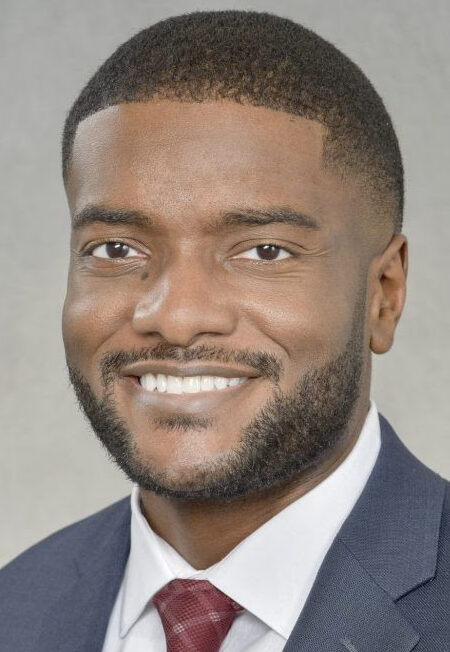 “60 Minutes+ is a new streaming news show that will premiere on ViacomCBS’ new streaming service Paramount+ with three new episodes on Thursday, March 4,” A.J. Katz reported Thursday for TV Newser. . . . CBS News senior producer Jonathan Blakely (pictured) has been named the executive producer of 60 Minutes+ , and its content will originate from the 60 Minutes production team in New York. The series will offer a new episode each week. 60 Minutes+ is essentially a new form of 60 Minutes featuring longer segments reported by the same team of correspondents that worked on the show 60 in 6, which aired earlier this year on the short-form video platform Quibi. Those correspondents are Laurie Segall, Enrique Acevedo, Seth Doane, and Wesley Lowery.”
“60 Minutes+ is a new streaming news show that will premiere on ViacomCBS’ new streaming service Paramount+ with three new episodes on Thursday, March 4,” A.J. Katz reported Thursday for TV Newser. . . . CBS News senior producer Jonathan Blakely (pictured) has been named the executive producer of 60 Minutes+ , and its content will originate from the 60 Minutes production team in New York. The series will offer a new episode each week. 60 Minutes+ is essentially a new form of 60 Minutes featuring longer segments reported by the same team of correspondents that worked on the show 60 in 6, which aired earlier this year on the short-form video platform Quibi. Those correspondents are Laurie Segall, Enrique Acevedo, Seth Doane, and Wesley Lowery.”
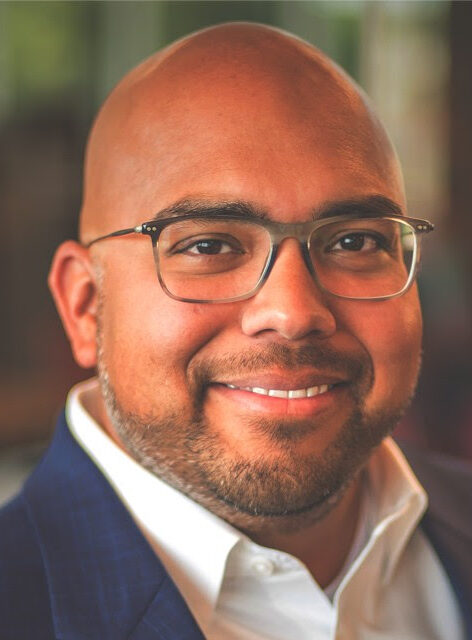 Andrew Ramsammy (pictured), an award-winning executive with a background in radio, TV, digital, podcasting, theater and corporate communications, became chief content and collaboration officer for Local Media Association effective Feb. 22. The association, which describes itself as “the only organization that brings all media together for the purpose of sharing, networking, collaborating and more,” said, “Ramsammy will guide two LMA and Local Media Foundation collaborative programs to start: Word in Black, in coordination with Nick Charles, its managing director; and Amplify Ohio, a new, regional collaborative of publications serving LGBTQ+ and communities of color. Ramsammy also will oversee The Fund for Local Journalism. . . .”
Andrew Ramsammy (pictured), an award-winning executive with a background in radio, TV, digital, podcasting, theater and corporate communications, became chief content and collaboration officer for Local Media Association effective Feb. 22. The association, which describes itself as “the only organization that brings all media together for the purpose of sharing, networking, collaborating and more,” said, “Ramsammy will guide two LMA and Local Media Foundation collaborative programs to start: Word in Black, in coordination with Nick Charles, its managing director; and Amplify Ohio, a new, regional collaborative of publications serving LGBTQ+ and communities of color. Ramsammy also will oversee The Fund for Local Journalism. . . .”
It’s official! These documents say Marvin is in cancer remission!!!???
31 But they that wait upon the Lord shall renew their strength; they shall mount up with wings as eagles; they shall run, and not be weary; and they shall walk, and not faint.
-Isaiah 40:31- pic.twitter.com/GlSZBzf0mk— Marvin Hurst (@MHurstKENS5) February 22, 2021
- Two years ago, Emily Porter wrote for KENS-TV, “While San Antonians celebrated the winter holidays this past December with festivities and fellowship, KENS 5’s resident food expert and eternally exuberant station staple, Marvin Hurst was having a different Christmastide experience, one much less celebratory in nature. Just two days after Christmas, Hurst was diagnosed with Squamous Cell Carcinoma of the throat.” On Feb. 22, Hurst tweeted, “It’s official! These documents say Marvin is in cancer remission!!!”
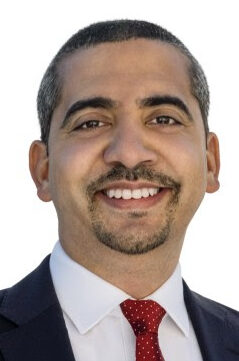 “MSNBC is giving former Al Jazeera journalist and author Mehdi Hasan (pictured), a spot in its prime-time lineup as the cable news network expands its opinion programming,” Stephen Battaglio reported Thursday for the Los Angeles Times. “Hasan, 41, is currently a political analyst on MSNBC and hosts a daily interview program on the NBCUniversal streaming service Peacock. MSNBC announced Thursday that he will take over the 8 p.m. Eastern hour on Sunday starting this weekend. . . .”
“MSNBC is giving former Al Jazeera journalist and author Mehdi Hasan (pictured), a spot in its prime-time lineup as the cable news network expands its opinion programming,” Stephen Battaglio reported Thursday for the Los Angeles Times. “Hasan, 41, is currently a political analyst on MSNBC and hosts a daily interview program on the NBCUniversal streaming service Peacock. MSNBC announced Thursday that he will take over the 8 p.m. Eastern hour on Sunday starting this weekend. . . .”
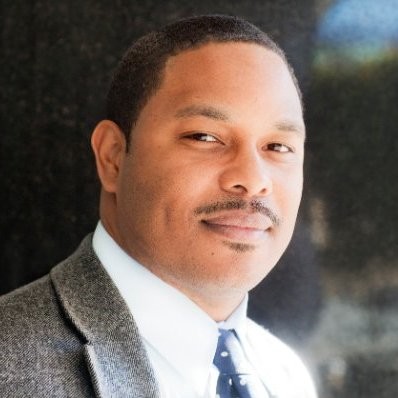 Brakkton Booker, (pictured) reporter at NPR, is joining Politico as a national correspondent and author of The Recast, Politico’s race and identity newsletter.
Brakkton Booker, (pictured) reporter at NPR, is joining Politico as a national correspondent and author of The Recast, Politico’s race and identity newsletter.
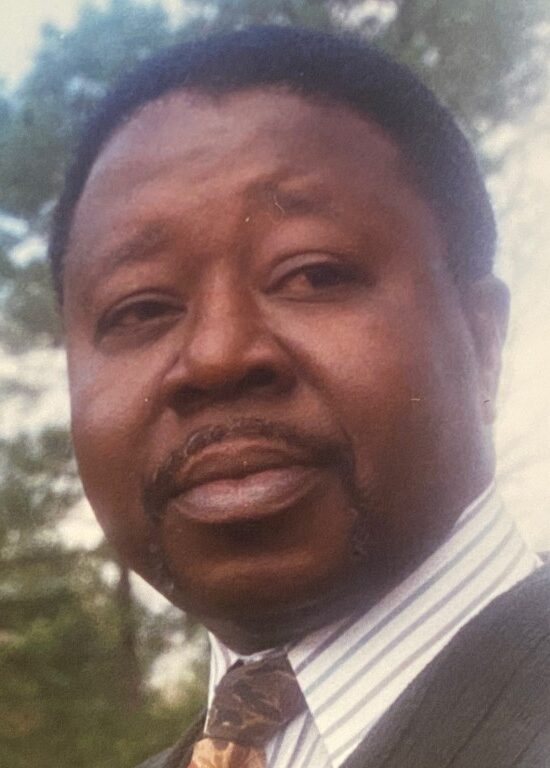 “James Edward Penny (pictured) brought a whole new way of thinking to the Grambling State University Television Center when he arrived on campus in the fall of 1986,” Reginald Owens wrote Feb. 11 for the campus newspaper The Gramblinite. Owens also wrote, “Penny died Tuesday, February 2, 2021, following a short illness at his home in Missouri City, Texas, a Houston suburb. He was 76 years old. A memorial service was held Saturday for the Odessa native, who retired in 2003 as director of the Television Center and assistant professor of mass communication at Grambling State University.”
“James Edward Penny (pictured) brought a whole new way of thinking to the Grambling State University Television Center when he arrived on campus in the fall of 1986,” Reginald Owens wrote Feb. 11 for the campus newspaper The Gramblinite. Owens also wrote, “Penny died Tuesday, February 2, 2021, following a short illness at his home in Missouri City, Texas, a Houston suburb. He was 76 years old. A memorial service was held Saturday for the Odessa native, who retired in 2003 as director of the Television Center and assistant professor of mass communication at Grambling State University.”
- “The five public media organizations that fund and distribute TV content created by nonwhite filmmakers will receive $500,000 increases in their annual funding from CPB,” Julian Wyllie and Skye Witley reported Feb. 22 for Current. “CPB announced Monday that it is boosting its support for each of the independent nonprofits that make up the National Multicultural Alliance: Black Public Media, the Center for Asian American Media, Latino Public Broadcasting, Pacific Islanders in Communications and Vision Maker Media.”
 Darryll Green (pictured), VP and general manager of WFTX Fort Myers, has been named VP and general manager of WFOR-WBFS Miami, part of CBS Television Stations. He starts March 8 and succeeds Adam Levy, who announced his departure in November,” Michael Malone reported Feb. 22 for NextTV.
Darryll Green (pictured), VP and general manager of WFTX Fort Myers, has been named VP and general manager of WFOR-WBFS Miami, part of CBS Television Stations. He starts March 8 and succeeds Adam Levy, who announced his departure in November,” Michael Malone reported Feb. 22 for NextTV.
- “Lawrence Otis Graham, an Ivy League-trained lawyer whose incisive, often searingly self-aware explorations of class identity and divisions among African-Americans made him one of the most widely read, and widely debated, Black writers of the 1990s, died on Feb. 19 at his home in Chappaqua, N.Y.,” Clay Risen reported Feb. 27, updated March 1, for The New York Times. “He was 59.”

- In Algeria, “On 18 February 2021, with the potential resumption of protests on the eve of the two-year anniversary of the ‘Hirak’ pro-democracy protest movement, President Abdelmadjid Tebboune announced a presidential pardon for at least thirty Hirak detainees, the British press freedom group Article 19 reported Feb. 22. “As of 21 February, 38 prisoners of conscience were released according to the National Committee for the Release of Detainees (CNLD), although it remains unclear how many were pardoned. At least 19 of them were only released conditionally while awaiting judgment, such as journalist Khaled Drareni, union activist Dalila Touat and political activist Rachid Nekkaz.” Columbia Journalism Review
- “Under the Daniel Ortega regime, the practice of journalism has become increasingly difficult in Nicaragua,” the LatAm Journalism Review reported March 2, citing the Nicaraguan publication Niú. “If this was already a difficult profession, now the lack of access to information, the constant harassment, the consummate confiscation of media outlets, the murders of journalists in full exercise of their work, and the trials and sentences of Nicaraguan journalists have made the work an act of resistance. . . . On this National Journalists Day, which cannot be celebrated under these conditions, we [at Niú] asked ten Nicaraguan journalists: why do you continue with journalism in Nicaragua?” [Added March 2]
- “At least eight Brazilian newspapers published an advertorial on Feb. 23 in which an obscure association of doctors defends the adoption of a so-called ‘early treatment’ of COVID-19, whose benefits are not scientifically proven,” Júlio Lubianco reported Wednesday for LatAm Journalism Review. “The decision of the newspaper companies to open space, albeit an advertising one, for the transmission of false information about the pandemic led to much criticism.”
- “Togolese authorities should immediately reverse the suspension of the L’Alternative newspaper and ensure journalists in the country can work free of harassment and intimidation“, the Committee to Protect Journalists said Friday. “On February 5, the Broadcast and Communications High Authority (HAAC), Togo’s media regulator, suspended the privately owned L’Alternative for four months, according to a copy of the suspension order reviewed by CPJ.”
- In response to Ethiopian military forces’ arrests of at least four journalists and media workers covering the conflict in the northern state of Tigray, the Committee to Protect Journalists said Monday that “The scarcity of independent reporting coming out of Tigray during this conflict was already deeply alarming. Now, the Ethiopian military’s arrests of journalists and media workers will undoubtedly lead to fear and self-censorship. Ethiopian authorities should release these journalists and media workers immediately and provide guarantees that the press can cover the conflict in Tigray without intimidation.”
To subscribe at no cost, please send an email to journal-isms+subscribe@groups.io and say who you are.
Facebook users: “Like” “Richard Prince’s Journal-isms” on Facebook.
Follow Richard Prince on Twitter @princeeditor
Richard Prince’s Journal-isms originates from Washington. It began in print before most of us knew what the internet was, and it would like to be referred to as a “column.” Any views expressed in the column are those of the person or organization quoted and not those of any other entity. Send tips, comments and concerns to Richard Prince at journal-isms+owner@
View previous columns (after Feb. 13, 2016).
View previous columns (before Feb. 13, 2016)
- Diversity’s Greatest Hits, 2018 (Jan. 4, 2019)
- Book Notes: Is Taking a Knee Really All That? (Dec. 20, 2018)
- Book Notes: Challenging ’45’ and Proudly Telling the Story (Dec. 18, 2018)
- Book Notes: Get Down With the Legends! (Dec. 11, 2018)
- Journalist Richard Prince w/Joe Madison (Sirius XM, April 18, 2018) (podcast)
- Richard Prince (journalist) (Wikipedia entry)
- February 2018 Podcast: Richard “Dick” Prince on the need for newsroom diversity (Gabriel Greschler, Student Press Law Center, Feb. 26, 2018)
- Diversity’s Greatest Hits, 2017 — Where Will They Take Us in the Year Ahead?
- Book Notes: Best Sellers, Uncovered Treasures, Overlooked History (Dec. 19, 2017)
- An advocate for diversity in the media is still pressing for representation, (Courtland Milloy, Washington Post, Nov. 28, 2017)
- Morgan Global Journalism Review: Journal-isms Journeys On (Aug. 31, 2017)
- Diversity’s Greatest Hits, 2016
- Book Notes: 16 Writers Dish About ‘Chelle,’ the First Lady
- Book Notes: From Coretta to Barack, and in Search of the Godfather
- Journal-isms’ Richard Prince Wants Your Ideas (FishbowlDC, Feb. 26, 2016)
- “JOURNAL-ISMS” IS LATEST TO BEAR BRUNT OF INDUSTRY’S ECONOMIC WOES (Feb. 19, 2016)
- Richard Prince with Charlayne Hunter-Gault,“PBS NewsHour,” “What stagnant diversity means for America’s newsrooms” (Dec. 15, 2015)
- Book Notes: Journalists Follow Their Passions
- Book Notes: Journalists Who Rocked Their World
- Book Notes: Hands Up! Read This!
- Book Notes: New Cosby Bio Looks Like a Best-Seller
- Journo-diversity advocate turns attention to Ezra Klein project (Erik Wemple, Washington Post, March 5, 2014)
.

